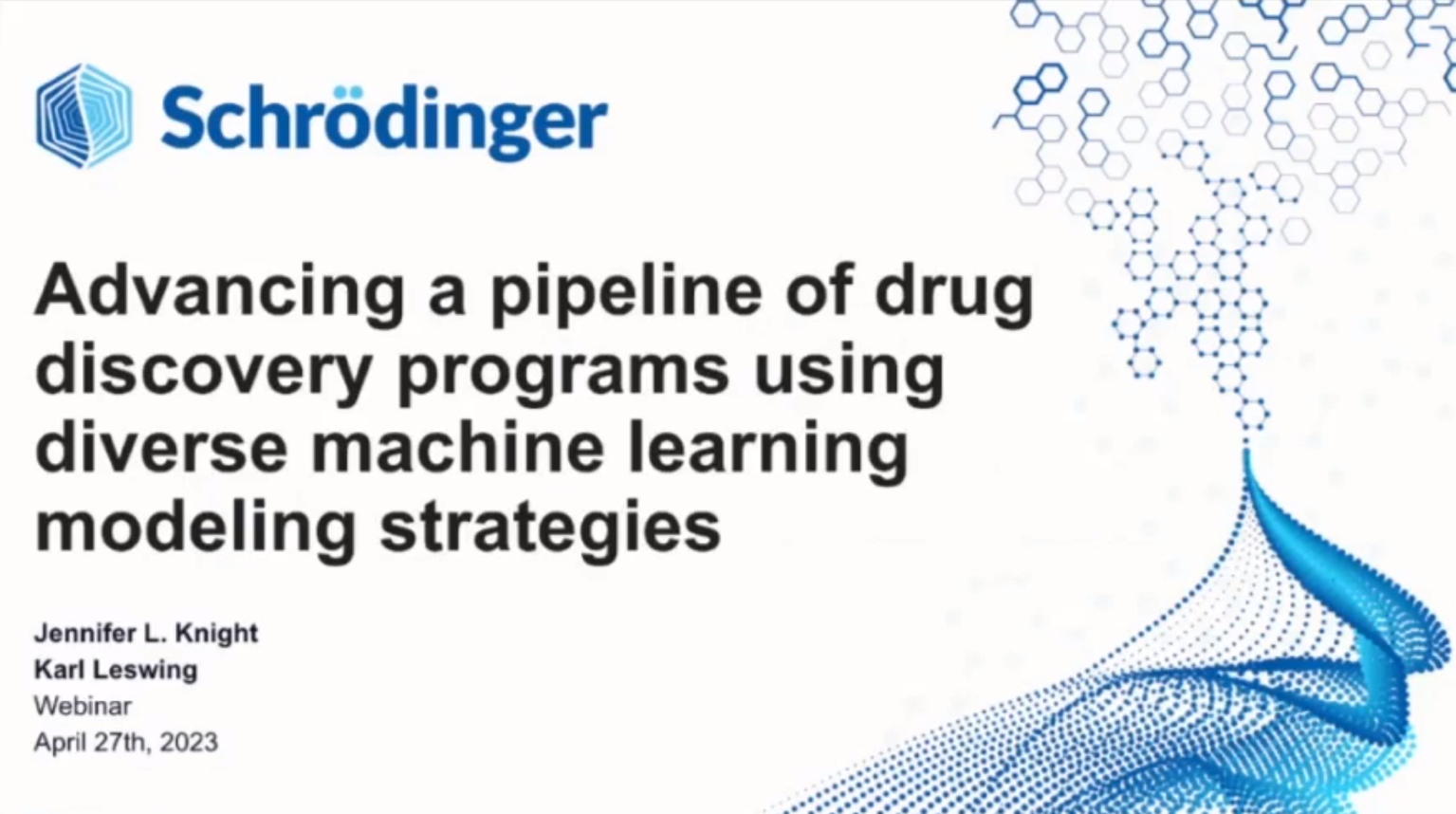
Advancing a Pipeline of Drug Discovery Programs Using Diverse Machine Learning Strategies Coupled with Physics-Based Simulations
Speakers
Jennifer Knight, Director at Schrödinger
Karl Leswing, Executive Director, Machine Learning at Schrödinger
Abstract
The application of machine learning (ML) to drug discovery is growing rapidly, ranging from target discovery to molecular design and patient stratification. However, the lack of large, high quality datasets on which to train models limits their current utility, particularly in early discovery. Complementing ML strategies with physics-based approaches offers a way to overcome these limitations and expand the domain of applicability of ML models.
In this presentation, we describe how we are integrating machine learning strategies with physics-based modeling technologies within Schrödinger’s Therapeutics Group – from hit discovery to lead optimization and drug formulation – and the impact of these approaches on active drug discovery programs.
Key Takeaways:
- Active learning strategies enable routine, efficient exploration of target-specific chemical space as well as protocol optimization to streamline project work and decisions
- Automated machine learning engines within LiveDesign allow whole teams to iterate through training, reviewing and deploying models to drive the drug design and optimization process
- Deep neural networks trained on QM DFT calculations (QRNN) can help guide in silico crystal polymorph prediction for de-risking drug formulation
- Generative machine learning approaches can design into new, highly-targeted chemical space